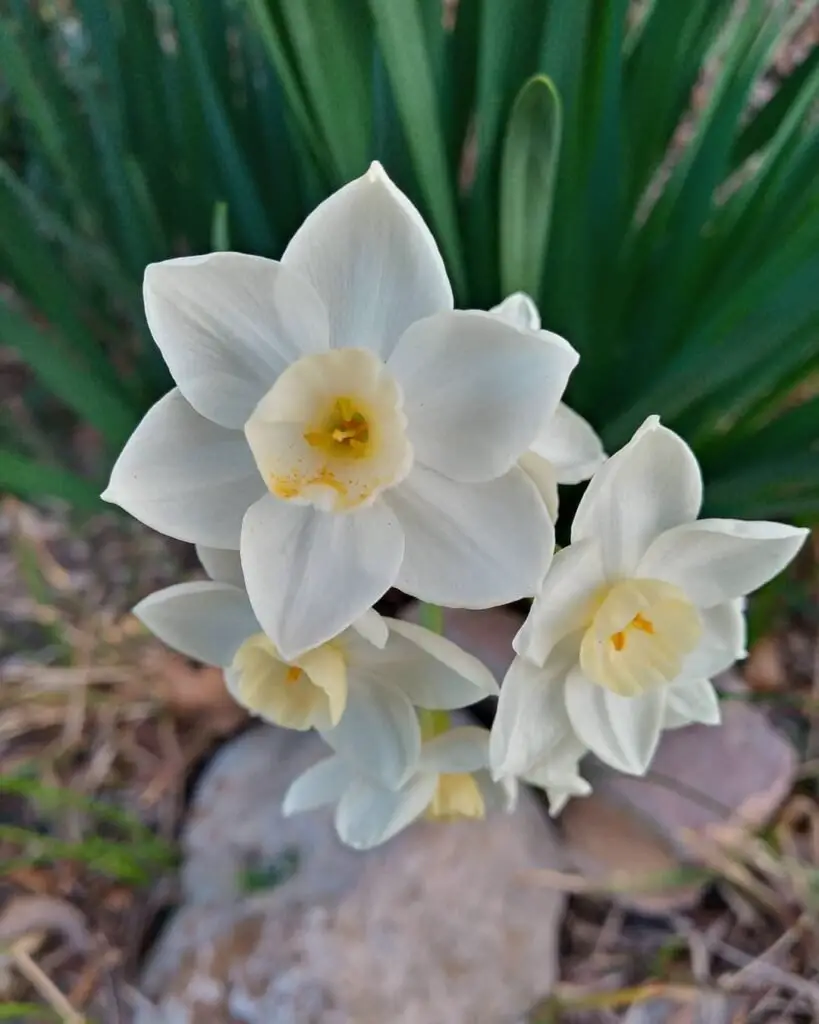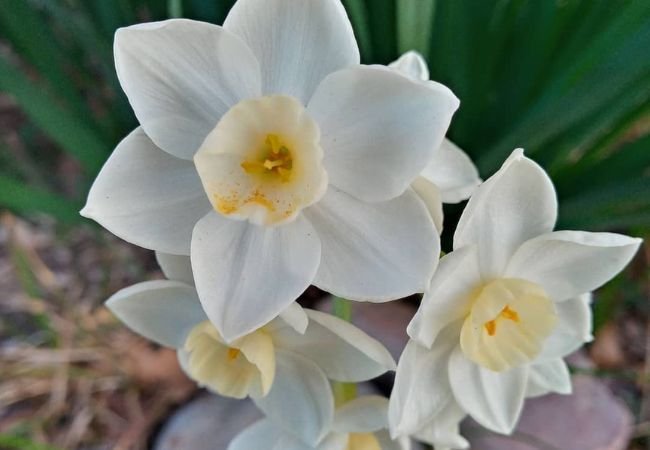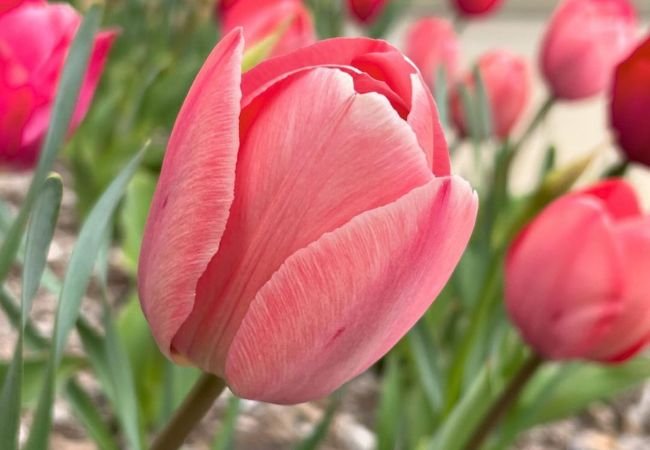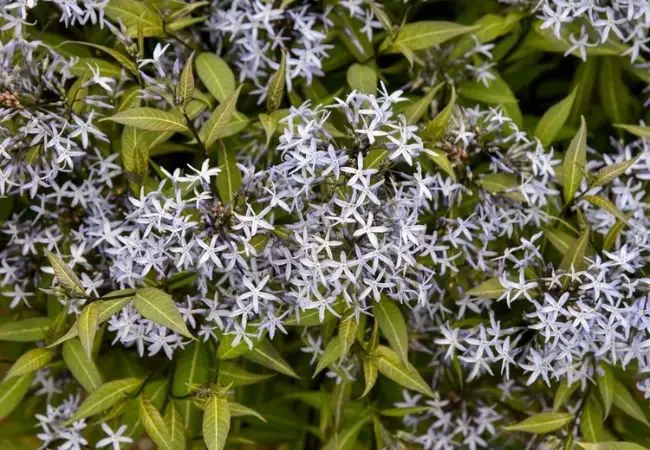Discover how to grow and care for stunning white daffodils. Learn expert tips on planting, maintenance and popular varieties to create a pristine spring garden. Perfect for both novice and experienced gardeners.”
White daffodils are elegant spring-flowering bulbs known for their pure, luminous blooms. They thrive in well-draining soil and full sun to partial shade. Plant bulbs in fall, 6 inches deep and 4-6 inches apart, for spring flowers. Water moderately and allow foliage to die back naturally after blooming. Popular white varieties include ‘Mount Hood’, ‘Thalia’ and ‘Ice Follies’.
As a bulb specialist with over two decades of experience, I’m thrilled to share my expertise on growing and caring for white daffodils. These pristine flowers can add a touch of elegance and serenity to any garden, heralding the arrival of spring with their graceful blooms.
Understanding White Daffodils

White daffodils, botanically known as Narcissus, are part of the Amaryllidaceae family. They come in various forms, from classic trumpet shapes to delicate multi-flowered varieties. White daffodils symbolize new beginnings, purity and rebirth, making them perfect for spring gardens and celebratory occasions.
For more information on daffodil symbolism and history, visit the American Daffodil Society’s Culture and History page.
Popular White Daffodil Varieties
- ‘Mount Hood’: Large, pure white trumpet daffodil
- ‘Thalia’: Multi-flowered with fragrant, swept-back petals
- ‘Ice Follies’: Large-cupped daffodil with white petals and a frilled, pale yellow cup that fades to white
- ‘White Lion’: Double daffodil with layered white petals and pale yellow segments
- ‘Polar Ice’: Small-cupped daffodil with pure white petals and a tiny green-eyed cup
For a comprehensive list of daffodil varieties, check out the Royal Horticultural Society’s daffodil database.
Planting White Daffodils
Timing
Plant daffodil bulbs in the fall, typically 2-4 weeks before the ground freezes. This allows bulbs to establish roots before winter dormancy.
Location
Choose a spot with:
- Full sun to partial shade (at least 6 hours of sunlight daily)
- Well-draining soil to prevent bulb rot
- Protection from strong winds
Soil Preparation
Prepare the soil by:
- Loosening it to a depth of about 12 inches
- Incorporating organic matter like compost to improve drainage and nutrients
- Ensuring the soil pH is between 6.0 and 7.0
For more details on soil preparation for bulbs, visit Cornell University’s Flower Bulb Research Program page.
Planting Process
- Dig holes about 6 inches deep and 4-6 inches apart
- Place bulbs pointy side up in the holes
- Cover with soil and water thoroughly
- Add a layer of mulch for winter protection
Caring for White Daffodils
Watering
- Water thoroughly after planting
- In spring, water moderately when the soil feels dry
- Reduce watering after blooming as daffodils prefer drier conditions during dormancy
Fertilizing
- Apply a balanced, low-nitrogen bulb fertilizer in fall during planting
- Fertilize again in early spring when shoots emerge
- Avoid high-nitrogen fertilizers, which can lead to bulb rot
For more information on fertilizing spring bulbs, check out The Ohio State University’s Extension guide.
Post-Bloom Care
- Allow foliage to die back naturally (about 6 weeks) to replenish bulb nutrients
- Cut off spent flowers to prevent seed formation and conserve energy
- Consider dividing clumps every 3-5 years if blooms diminish
Pest and Disease Management
Common issues include:
- Basal rot: Ensure good drainage and avoid overwatering
- Narcissus bulb fly: Plant bulbs deeper and use beneficial nematodes
- Daffodil virus: Remove and destroy infected plants, control aphids which spread the virus
For more on daffodil pests and diseases, visit Washington State University’s Extension page.
Using White Daffodils in the Garden
Landscaping Ideas
- Plant in drifts for a stunning visual impact
- Use as borders along walkways or garden edges
- Naturalize in lawns or woodland areas for a wild, spring meadow look
- Combine with blue or purple spring flowers for a striking contrast
Cut Flowers
- Cut when buds are colored but not fully open
- Place stems in warm water and keep in a cool location
- Change water every few days to prolong vase life
For tips on extending the vase life of daffodils, check out the University of Maryland Extension’s guide.
Growing white daffodils can bring a touch of elegance and purity to your spring garden. With proper planting and care, these resilient bulbs will reward you with beautiful blooms year after year. Remember, the key to success lies in well-draining soil, proper planting depth, and allowing the foliage to die back naturally after blooming. Whether you’re a seasoned gardener or a beginner, white daffodils are a lovely and low-maintenance addition to any garden palette. Happy planting!
For more in-depth information on daffodil cultivation, visit the Netherlands Flower Bulb Information Center.
For more gardening tips and plant care guides, visit usagardenhub.com.






